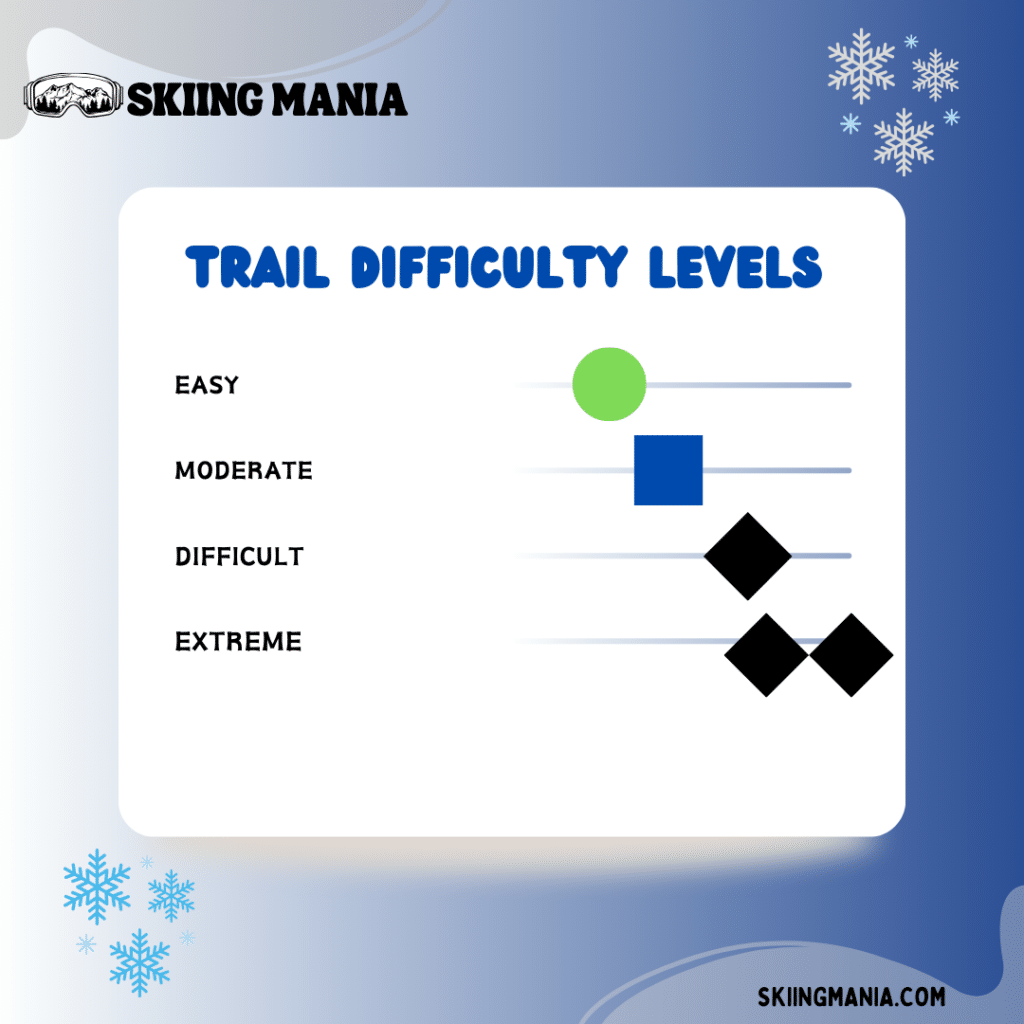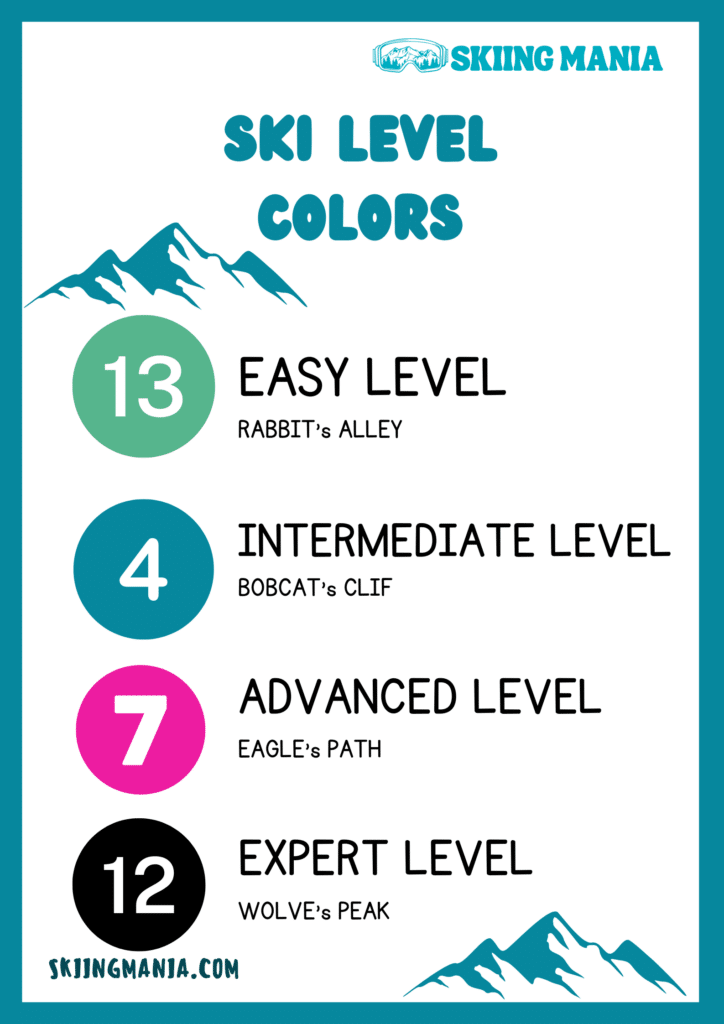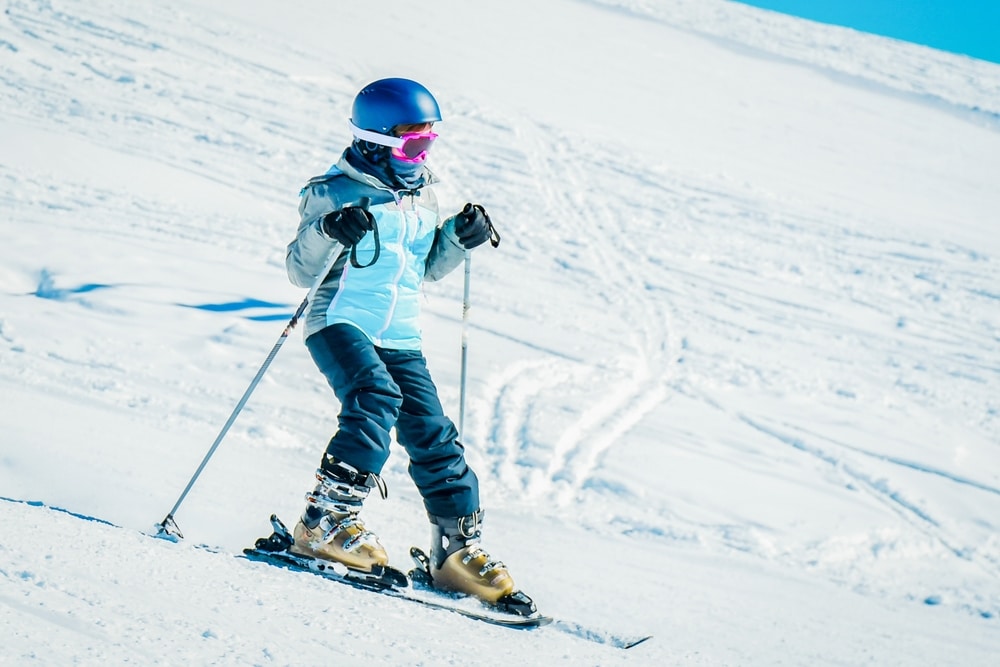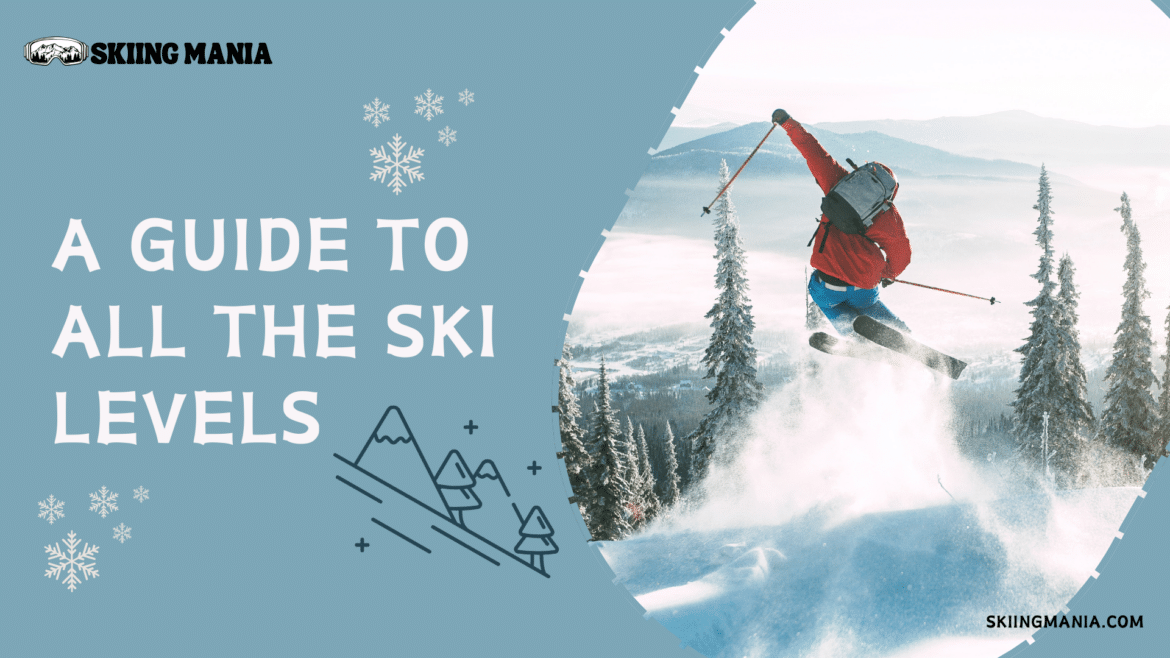Table of Contents
Want to be the master of your ski game? The art of skiing levels ranges from beginner to advanced level skiers. Now, these levels also come with trial ratings. You must be wondering what these levels are. These levels indicate difficulty for a certain skiing experience. Worry not, as we will explore a proper guide on each of the ratings along with ski areas. Join us on this skiing journey as we explore the multiple ski slope levels. So, without any further ado, let’s master all the levels!
What do Ski Levels Represent?
From level 1 for complete beginners to level 9 for seasoned professionals, more specialized levels address differing degrees of expertise beyond these categories.
- To ensure a fun and safe experience on the slopes, skiers must appropriately assess their abilities and select appropriate terrain, which requires knowledge of skiing difficulty ratings.
- Ski resorts frequently employ trail ratings and colored symbols, green denoting beginner difficulty, blue intermediate difficulty, and black denoting advanced/expert difficulty, to assist skiers in navigating the varied terrain found in North American ski regions.
- Certified ski instructors may help skiers improve their abilities by teaching them tricks like parallel turns and appropriate pole planting that will boost their performance on the slopes.
Furthermore, by keeping an eye on the situation and offering aid when necessary, ski patrols contribute significantly to the overall enjoyment of skiing for lovers of all ability levels.

Levels of Skiing
Skiing competency is sometimes divided into three skill levels: expert, intermediate, and beginner. Each skill level corresponds to a different set of skills and methods. Here’s a look at these levels.
Beginner Ski Levels 1-9
Beginner skiers, who are usually categorized as having Ski Levels 1 through 4, are only beginning to understand the basics of the sport.
- Ski Level 1: This group includes beginner skiers who have never used skis before. They don’t even know the fundamental posture and motions needed for skiing; they are total beginners.
- Ski Level 2: People at this level may have tried skiing once or twice in the past, but they still lack confidence and haven’t made much progress. Skiers rated as level 2 are still learning the basics of skiing.
- Ski Level 3: Skiers have gained some confidence at this level and can turn on easy beginner trails utilizing a wedge technique. Compared to Level 2 skiers, they are more consistently able to manage their direction and speed.
- Ski Level 4: Skiers at this level are beginning to move into more intermediate terrain, having advanced past the total beginner stage. They can link turns on easy or green-blue trails at a modest speed.
Intermediate Ski Levels
Here is a look at the ski intermediate levels.
- Level 5: At this point, intermediate skiers have mastered all green runs in parallel, demonstrating a firm command of basic abilities. They can continue parallel skiing on mild blue runs, but wedging during turns may still happen.
- Level 6: Skiers intermediate enough to make it to this level are proficient on all blue slopes, can parallel ski them, and are getting close to becoming experts on black diamond lines.
Advanced Ski Level
Next is the advanced ski level.
- Level 7: Skiers at this level are competent and confident when making parallel turns. They follow manicured blue and blue/black tracks at a prescribed pace and cadence. At level 7, skiers start pushing their limits and exploring more difficult terrain, like bumps, trees, and snow.
- Level 8: Skiers at this level are at the highest level of ability and can confidently navigate any terrain. Carving comes easily to them on well-manicured runs, no matter how long the turn is.
Expert Ski Levels
The final and last level is known as the expert skiing level.
- Level 9 skiers are like ski masters; they have a unique blend of skill and grace on the slopes.
- They easily glide over the most difficult terrains, projecting confidence from their endless hours of training and experience.
In contrast to inexperienced skiers who would avoid difficult terrain, Level 9 skiers aggressively search out the most difficult runs. They enjoy testing their boundaries and are always looking for new challenges that will allow them to grow as individuals and as professionals.

Ski Skill Level Colors
Here is a look at the color levels for all the ski levels.
- Green Ski Runs: Easy green runs have wide, mild slopes with grades under 25%, making them ideal for novices. These runs provide beginners plenty of room to work on basic skills like snowplow turns while feeling safe from more experienced skiers.
- Blue Ski Runs: Skiers advancing to intermediate levels can enjoy the 25%–40% gradients on blue runs. Even though they present a moderate challenge, individuals with some expertise can still achieve them. On blue runs, skiers should focus on balance and alertness because they are more likely to come into contact with quicker skiers and turn in tighter turns.
- Advanced Terrain on Red Ski Runs: Red runs are considered advanced terrain. They have gradients ranging from 30% to 45% and require skill and proficiency to navigate difficult curves and jumps. Though bold novices may try red runs with some practice, more seasoned skiers looking for an adrenaline rush usually take on these challenges.
- Black Ski Runs: Black runs are the hardest terrain available for experienced skiers, with grades up to 40%. These courses are challenging due to their high drops and hazardous terrain; skiers must have a good command of technique, keen intuition, and constant focus.
Putting Safety First ⚠️
Regardless of ability level, all skiers should put safety first and proceed cautiously when on the slopes. Selecting runs that fit one’s ability level is crucial to reducing the chance of injury and guaranteeing a fun time on the slopes. Gaining proficiency in balance, control, and awareness improves enjoyment when negotiating the various obstacles found in ski terrain.

Final Thoughts 💎
Summing up, knowing one’s ski level is essential for any skier traversing the various slopes in North American ski resorts. Ski levels divide the terrain’s complexity into manageable sections for beginners and demanding black diamond trails for experts. This allows skiers to choose slopes that correspond to their ability level.
In conclusion, ski ability levels ultimately allow skiers to discover the rich and thrilling world of skiing, taking beginners and turning them into experienced professionals one level at a time.
MASTER ALL SKI LEVELS!


1 comment
[…] have you ever heard of skiing levels? Black diamond skiing is a really popular kind of skiing level. When you’re preparing your ski […]